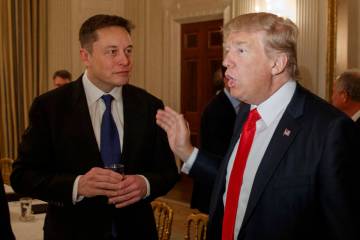EDITORIAL: Donald Trump’s budget correct to eliminate student loan giveaway
Among the many items in President Trump’s proposed 2017 budget is the elimination of the nation’s Public Service Loan Forgiveness program. Created in 2007 under the Bush administration, the program was intended to encourage college graduates to pursue careers in public service in exchange for having their federal student loans forgiven after 10 years of payments.
In practice, however, it’s turned out to be a giveaway that threatens to become another massive taxpayer boondoggle.
As USA Today notes, under the program, teachers, doctors, nurses, first responders, social workers and other public-service workers could eliminate their student loan debt after landing full-time employment with a qualified employer (such as a hospital or public school), getting enrolled in a qualifying repayment plan and making 120 monthly repayments.
Trump’s proposal to cut the program would save an estimated $859 million. Given the program’s flaws and inherent inequities, it’s the right move.
As Beth Akers pointed out in a recent piece for The Hill, excluding private-sector workers from the program is problematic. Despite the fact that private, nonprofit, and government entities often provide similar services to their communities, the program limits loan forgiveness subsidies to public workers. On top of that, college grads with small or modest debt don’t benefit from the program. As a result, the handout creates an incentive for graduates with significant student debt to enter public service. How is that helpful?
As Ms. Akers also notes, the loan forgiveness policy creates an incentive for recipients to act irresponsibly. Students who repay their own debt typically borrow only what they need. Those who know they won’t have to repay their loans are not only more likely to attend higher-priced schools, but also more likely to borrow more money to live more comfortably than they would otherwise. Some schools have also figured out how to game the system, too, and the amount of funds available to borrow by both students and schools is virtually endless.
Couple that with the fact that underwriting standards for federal student loans are nonexistent — majoring in basket-weaving? Here’s $20,000! — and you’ve got a recipe for fiscal disaster.
But beyond these obvious flaws, the main problem with the program is a simple one: When people take out student loans from the government, taxpayers have every right to assume that they will be repaid. Has this really become an outdated notion?
Congress shouldn’t pass on the opportunity to scrap the Public Service Loan Forgiveness program.

















